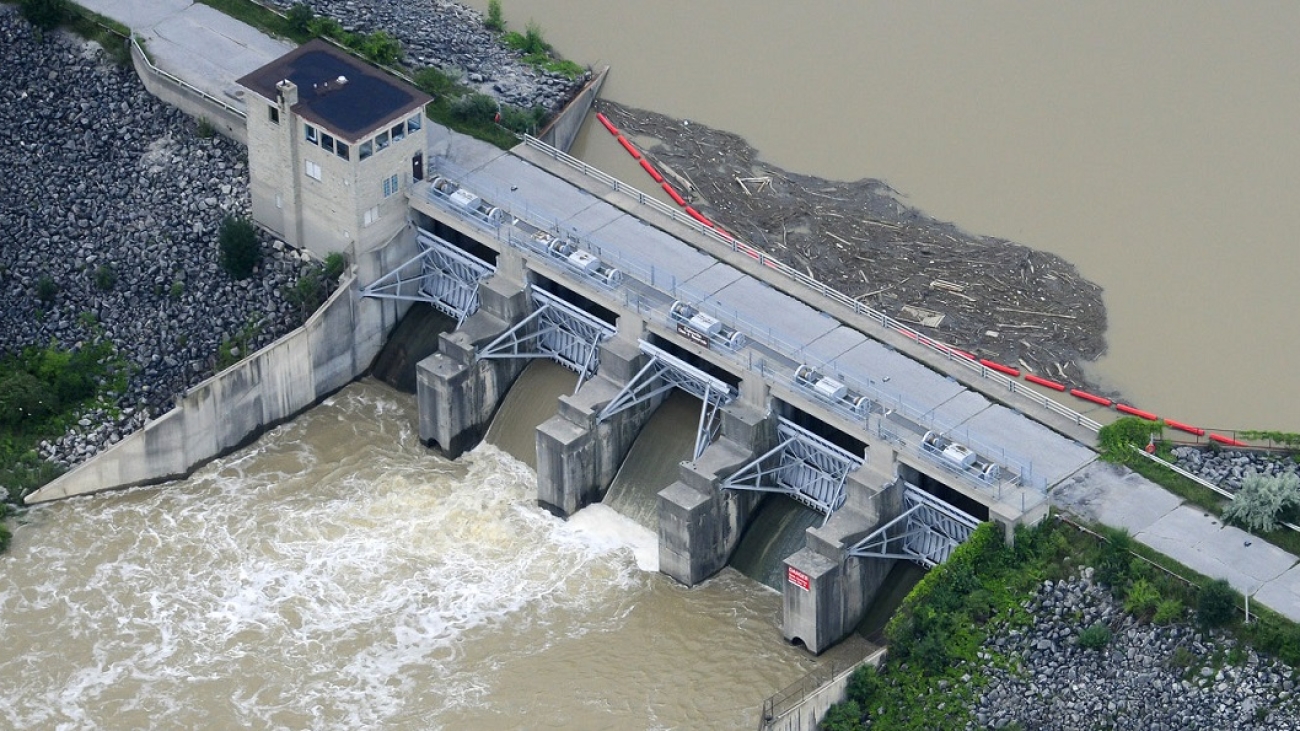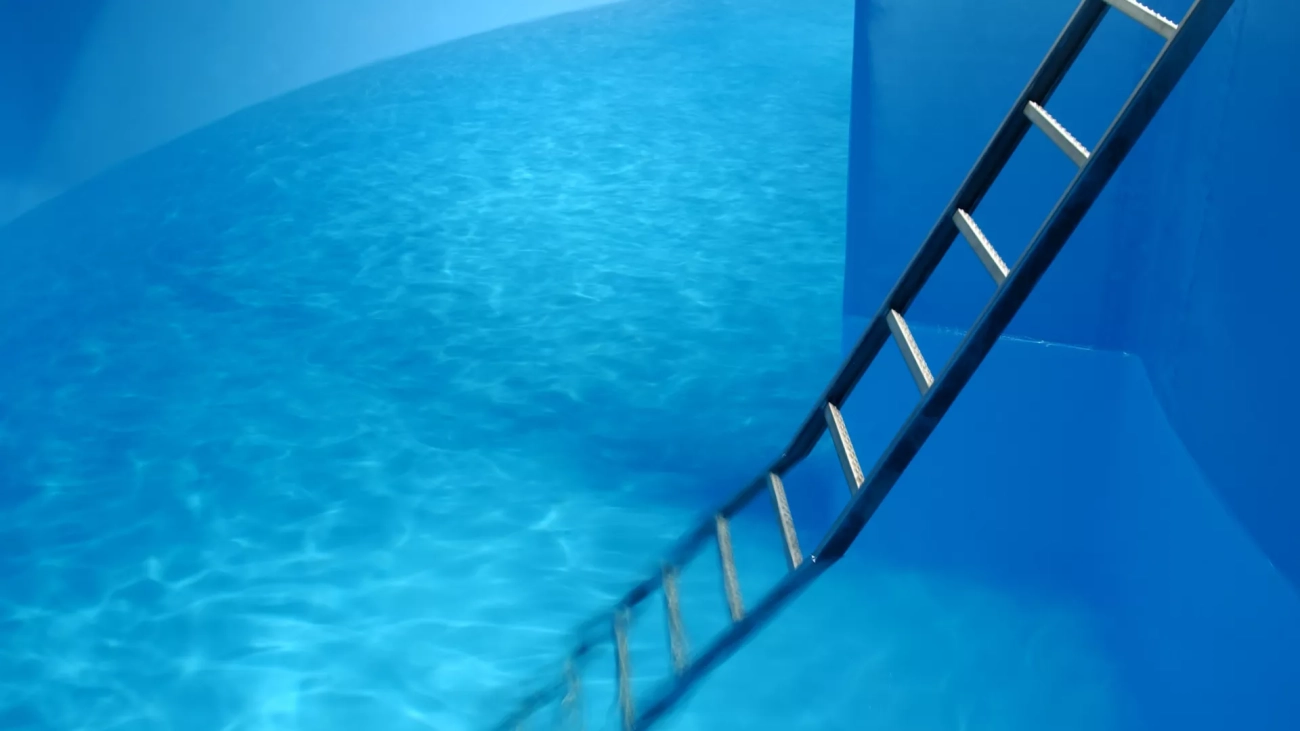The dangers of climate change are often discussed as if they only exist in the distant future, but in reality climate change is a gradual process that’s already begun, and Canada is not immune.
Canadians have surely noticed weather is becoming more chaotic with each passing year. As Canada continues to break precipitation records, flood control infrastructure that was built for calmer storms is unprepared. While the world tries to combat climate change at the source, even the most optimistic projections reveal that Canadian flood control infrastructure needs a major overhaul if people and property are to survive the battle that is to come over the next few decades. But, demolishing and rebuilding miles of reinforced concrete is neither fiscally nor environmentally realistic for Canadians and their municipalities. Instead, engineers can turn to spray‑applied polyurea flood wall coatings; thin and seamless membranes that can be installed quickly and cost-effectively and add decades of service life to critical flood‑control works.
WHAT ARE POLYUREA FLOOD CONTROL COATINGS AND WHY DO THEY MAKE ALL THE DIFFERENCE?
Polyurea is a two‑component, 100%‑solids elastomer that reacts instantaneously as it’s ejected from high-pressure spray equipment. Its gel time is on the order of seconds and full cure finishes far faster than competing materials technologies, so return to lifesaving service is as fast as possible. One of many of polyurea’s strengths is that it forms a monolithic film that is free of pinholes or cold joints, making it a single, powerful impermeable barrier. Once polyurea cures, the membrane is both hydrophobic and impermeable, reliably resisting hydrostatic pressures that would otherwise force water through cement paste or construction joints. Polyurea also exhibits an order‑of‑magnitude gain in wear resistance compared with bare concrete, which is an especially important metric when high‑velocity floodwater is loaded with angular sediment.
SPEED AND DURABILITY WITH THE ULTIMATE IMPERMEABILITY
Concrete floodwalls are required to withstand intense and prolonged physical and chemical stress, which is why polyurea’s tensile profile is invaluable. Polyurea films stretch over working cracks without tearing or delaminating, and this same ductility lets the lining move with sheet‑piles or precast panels in modular flood‑gate systems that are assembled and disassembled seasonally. But in many cases, the decisive factor is not strength, but speed; crews armed with a modern rig can rehabilitate 100–150 m2 of wall in a single shift, even when the substrate is still damp from moisture-laden treatments. The surface also becomes foot‑traffic‑ready in hours or even days faster than with polyurea’s alternatives, and can withstand re‑pressurization of a pump sump or canal within just a single tide cycle. This is an impossible schedule for traditional epoxy, cementitious, or HDPE‑sheet systems, so polyurea is the uncontested choice for “just‑in‑time” interventions.
MULTI-LAYER, MULTI-LEVEL SAFETY
The problems that polyurea floodwall coatings seek to solve are a consequence of climate change, so it’s essential that one environmental issue isn’t replaced by another. With polyurea coatings, this is not the case, especially when compared to pouring several meters of fresh concrete. A typical ~2 mm layer of polyurea adds less than 2 kg CO2-e per m2, which is roughly one tenth the carbon footprint associated with a concrete overlay. At the same time polyurea also imparts robust durability well beyond what can be expected of normal concrete so infrastructure better withstands physical and chemical stress, thereby saving increasingly scarce or expensive resources. And while inherently safer considering its application to control dangerous floodwaters, polyurea additionally promotes safety through the incorporation of high‑visibility flood‑stage markings in lieu of using separate signage that would fade or delaminate sooner.
CHOOSE POLYUREA SPRAY-APPLIED COATINGS FOR CANADIAN FLOOD CONTROL INFRASTRUCTURE PROJECTS
Canadian flood‑control infrastructure has to contend not just with more water, but shorter warning times and tighter budgets. Unfortunately these conditions aren’t expected to dissipate any time soon, but the good news is that by delivering a fast‑curing, crack‑bridging, chemically inert membrane, polyurea flood wall coatings allow stakeholders to rehabilitate existing structures instead of replacing them, thereby enjoying the same extension in service life, improved resilience, and satisfaction of modern sustainability targets with minimal disruption. Municipalities weighing the cost of another concrete pour against the certainty of the next river from above can use spray‑applied polyurea to provide a high‑performance retrofit that is ready today and prepared for the future, no matter how chaotic or uncertain, which is about all that’s guaranteed.


